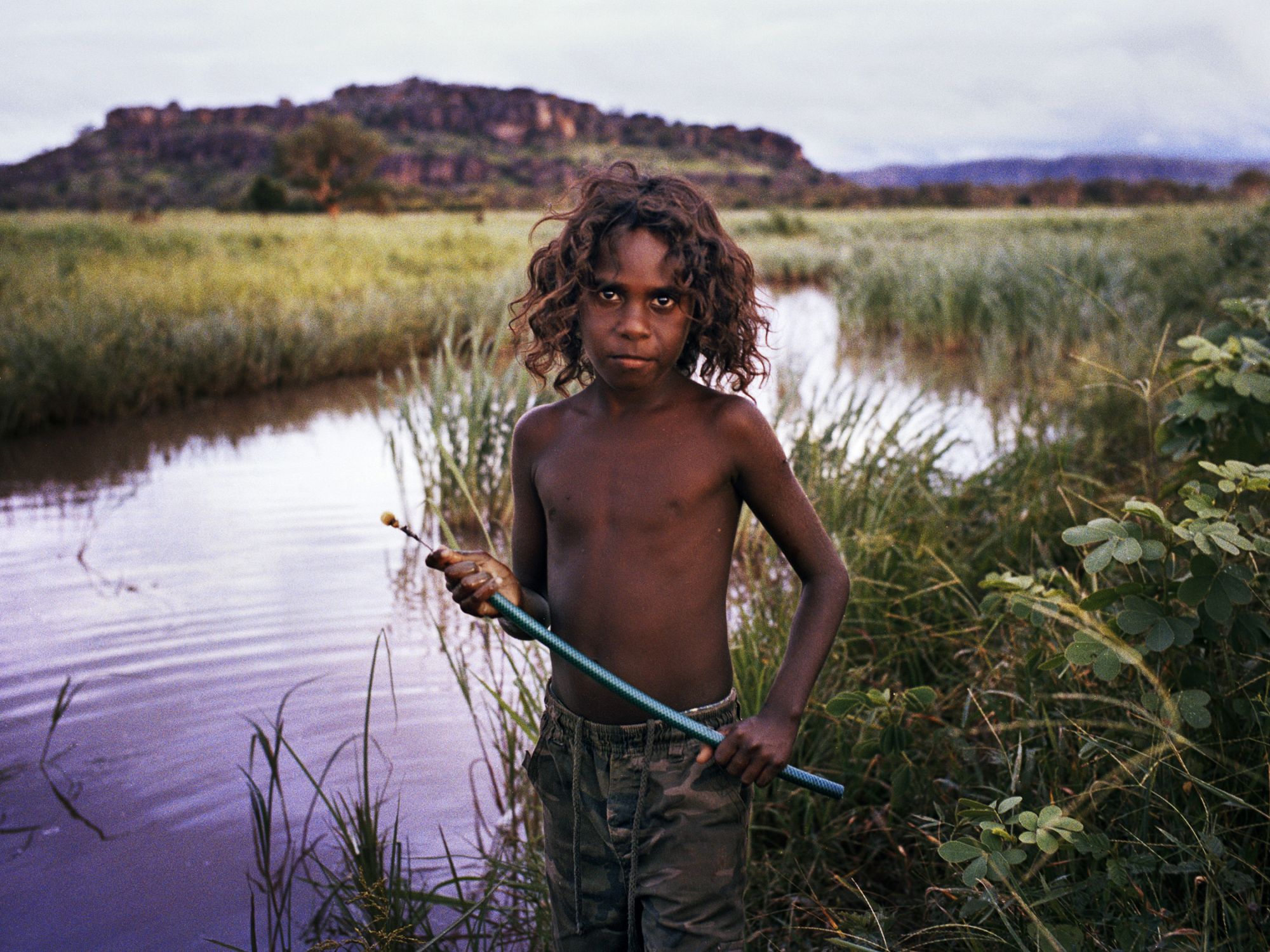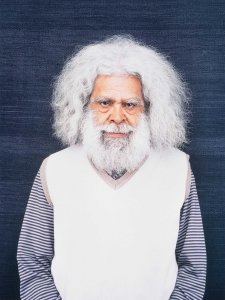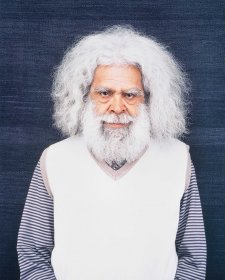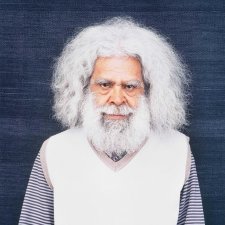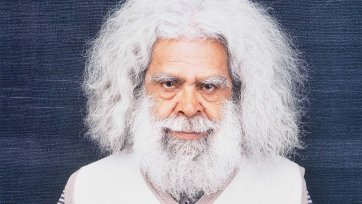I have spent the last three years photographing in Arnhem Land, Northern Territory. Late one afternoon on a walk around Injalak billabong at Gunbalanya, I came across Damien with his friends hunting frogs. They had ingeniously contrived a blowpipe and darts from a hose and other bits and pieces. According to Damien, frogs make the best bait for catching catfish. I like this portrait because it exemplifies the independence Aboriginal kids have and their skill at hunting using whatever's at hand.
Questions
1. What do you learn about Damien through the location of this portrait?
2. How would you describe the expression captured in Abbott's portrait of Damien?
3. How does the portrait represent "the independence Aboriginal kids have" as expressed by the photographer in his artist statement.
The photographer and the portrait -
an interview
How do you define your practice?
Documentary photographer.
Do you have a website or are you represented on a website?
abbott-reportage.com
What is your relationship to the subject?
When you first start a long term project there is always distance between you and the subject. On this project I have spent years building relationships and trust that result in insightful pictures - just like photographing your friends.
Was the photograph a result of a constructed or candid encounter?
I generally avoid taking portraits, mainly because I have an issue with any construction. This image of Damien was taken as he was walking towards me one afternoon. I took a few others as he played with friends but this was the best image.
Describe the technical aspects of your photograph.
I use a Leica camera with a 35mm lens and Kodak Portra film. The image has been hand printed. I try and avoid digital, but sometimes it's more economical.
How was the final print made?
The print is a type c photograph, hand printed by Sandyprints in Sydney. She is a very talented printer.
Describe your consideration of scale, mounting and framing in the presentation of your portrait.
Printing, mounting and framing is very expensive. I went for a size that was just large enough to make an impact. With framing and mounting I generally leave it to the experts. It's generally best to avoid anything that may take away from the image - best to keep it simple.
Who would you nominate as your influences?
I have many influences and am always viewing new work. In Australia Trent Parke and Stephen Dupont are exceptional.
Do you have any advice for young or emerging photographers (eg. students)?
Always photograph what you are interested in - weddings, wars or cats - it doesn't matter. Passion is the only thing that will keep you going. Never sell out. Otherwise choose another profession that pays better.
